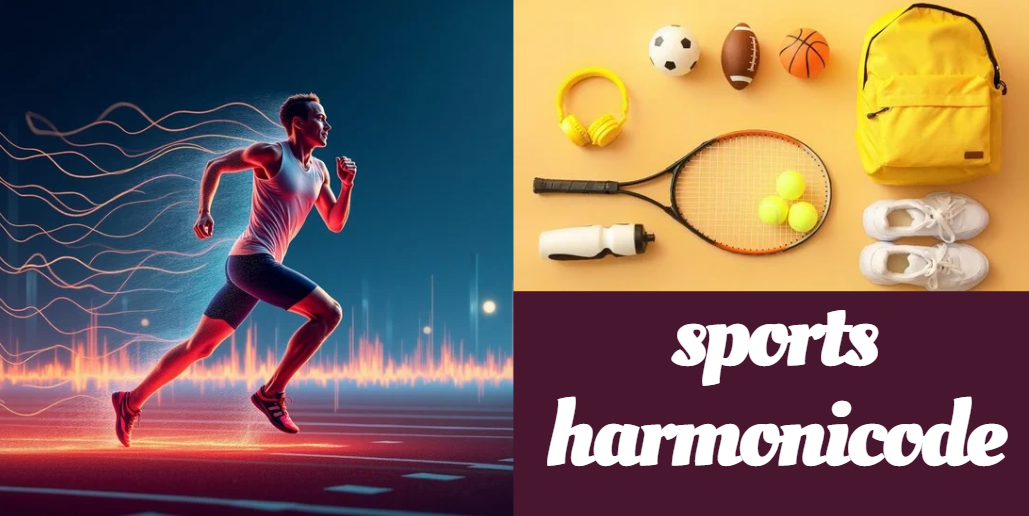Unlocking Peak Performance with sports harmonicode: The Ultimate Guide
In the world of high‑performance athletics, marginal gains can mean the difference between victory and defeat. sports harmonicode represents a cutting‑edge approach that merges the science of movement with data analytics and rhythm.
By viewing an athlete’s motion as a series of oscillations—each with its own natural frequency—coaches and sports scientists can identify hidden inefficiencies, tailor training protocols, and elevate performance to new heights. This guide will explore the origins, science, technologies, and practical applications of sports harmonicode, offering you everything needed to harness its power.
Origins & Evolution
The roots of sports harmonicode trace back to early biomechanical research and the study of resonance in physical systems. Researchers observed that just as musical instruments resonate at specific frequencies, the human body exhibits natural oscillatory patterns during running, jumping, or swinging.
Over decades, advances in motion‑capture technology, wearable sensors, and machine learning transformed these insights into actionable training methods. The term “harmonicode” emerged as specialists sought a unifying framework to describe the decoding of movement harmonics—akin to translating a complex musical score into optimal athletic motion.
The Science Behind sports harmonicode
Biomechanics & Resonance
Every athletic gesture—from a sprinter’s stride to a tennis serve—can be analyzed as a waveform. Joint angles, ground reaction forces, and muscle activations oscillate in time. By applying Fourier analysis, sports scientists decompose these signals into constituent frequencies, revealing a movement’s dominant rhythms.
When an athlete’s natural frequency aligns with their target motion, efficiency soars; when misaligned, wasted energy and injury risk increase.
Data Analytics & Artificial Intelligence
The explosion of wearable technology has generated terabytes of kinematic and physiological data. sports harmonicode leverages AI algorithms to sift through this data, detecting patterns that elude the human eye. Supervised learning models correlate specific frequency profiles with performance outcomes—such as sprint times or jump heights—while anomaly detection flags emerging asymmetries that may presage injury.
Neuro‑muscular Synchronization
At its core, sports harmonicode also taps into the brain’s ability to synchronize motor commands with rhythmic cues. Research shows that coupling movement to an external beat—whether a metronome or adaptive audio track—enhances timing precision and reduces reaction latency. This neuro‑muscular synchronization fosters a flow state, where split‑second decisions feel instinctive.
Core Components & Technologies
Wearable Devices
Modern training rigs include inertial measurement units (IMUs) strapped to limbs, smart garments woven with EMG sensors, and force‑sensing insoles. These devices continuously capture:
- Stride frequency and ground contact time
- Joint angular velocities and accelerations
- Muscle activation intensity and timing
Such metrics form the raw inputs for harmonic analysis.
Software Platforms
Data streams from wearables feed into integrated dashboards that visualize an athlete’s “harmonic signature.” Interactive charts display frequency spectra, highlight deviations from target rhythms, and even simulate the effect of adjusting cadence or force application. Many platforms offer real‑time feedback, enabling coaches to intervene mid‑session.
Audio & Rhythm Integration
A unique facet of sports harmonicode is its use of rhythm generators. These tools create dynamic audio tracks whose tempo adapts to an athlete’s current frequency, guiding them toward optimal oscillations. Whether through headphones or stadium sound systems, rhythmic cues reinforce desired movement patterns.
Applications Across Sports
Individual Disciplines
In sprinting, fine‑tuning stride frequency by as little as 2 steps per minute can shave tenths of a second off a 100 m dash. Swimmers benefit from synchronizing stroke rate with underwater kicks, improving propulsion efficiency. In golf and tennis, swing harmonics dictate the transfer of energy from the torso to the club or racket, with small timing adjustments yielding greater ball speed and accuracy.
Team Dynamics
Team sports introduce the challenge of group synchronization. Soccer coaches use sports harmonicode to align passing rhythms, ensuring players move as a cohesive unit. Basketball teams monitor on‑court spacing and tempo to optimize fast‑break opportunities. Even esports athletes leverage micro‑movement harmonics—such as mouse‑click timing—to enhance reaction speed.
Rehabilitation & Recovery
Clinics specializing in injury rehab have adopted harmonicode analysis to detect subtle imbalances long before pain appears. Post‑surgery patients retrain with rhythm‑based exercises that gradually restore natural frequencies, accelerating return‑to‑play and reducing re‑injury rates.
Benefits & Return on Investment
Implementing sports harmonicode yields measurable gains:
| Benefit | Typical Improvement |
|---|---|
| Speed & Power | +1–3% |
| Endurance Efficiency | +5–8% VO₂ utilization |
| Injury Reduction | –15–25% soft‑tissue cases |
| Training Engagement | +20% adherence |
Teams often recoup hardware and software costs within a season through reduced downtime and improved results.
Step‑by‑Step Implementation Guide
To integrate sports harmonicode into your program:
- Assess Needs: Define performance goals (e.g., faster 5K time) and select key metrics.
- Choose Tools: Compare wearable sensors, analytics platforms, and rhythm generators based on budget and sport.
- Collect Baseline Data: Run initial sessions to capture each athlete’s harmonic profile.
- Analyze & Interpret: Identify frequency mismatches and movement asymmetries using AI‑driven reports.
- Design Training Drills: Incorporate rhythm‑based exercises, such as metronome‑paced sprints or audio‑guided swims.
- Monitor Progress: Reassess at regular intervals, adjusting targets and audio cues as needed.
Case Studies & Success Stories
A professional track club implemented sports harmonicode for its 400 m runners. By increasing stride resonance and reducing ground contact time, athletes saw an average time drop of 0.4 s over three months. Meanwhile, a Division I basketball program reduced hamstring injuries by 18% after introducing cadence‑focused conditioning sessions.
Common Challenges & Solutions
Many organizations encounter data overload. Focus on three to five key performance indicators rather than every available metric. Athlete buy‑in can be fostered through gamification—rewarding adherence to rhythm targets with leaderboards and badges. Technical hurdles, such as sensor drift or connectivity issues, are best managed by routine calibration and choosing platforms with robust support.
Future Trends & Innovations
The horizon of sports harmonicode includes:
- Predictive Coaching: AI models that forecast injury risk days in advance.
- VR/AR Feedback: Immersive environments where athletes “see” their harmonic signature in real time.
- Cross‑Discipline Expansion: Applications in dance, military training, and physical therapy.
Expert Insights
Leading biomechanists and pro coaches emphasize that sports harmonicode is not a silver bullet but a powerful complement to traditional training. Its greatest strength lies in revealing hidden inefficiencies and aligning the art of coaching with the precision of data science.
FAQs
What role does breathing rhythm play in sports harmonicode?
Breathing cadence can be synchronized with movement frequencies to enhance oxygen delivery and maintain optimal muscle activation. By aligning inhale‑exhale cycles with stride or stroke patterns, athletes often experience improved endurance and reduced fatigue.
Can sports harmonicode be applied to strength training?
Yes. Weightlifting and resistance exercises have their own optimal tempo—for example, the ideal speed of the eccentric (lowering) and concentric (lifting) phases. Analyzing these tempos as harmonic frequencies helps lifters maximize force production and minimize injury risk.
How does environmental noise affect harmonic training sessions?
External sounds can interfere with rhythm cues, so many coaches use noise‑canceling headphones or bone‑conduction audio devices to deliver clear, uninterrupted metronome beats or adaptive music tracks during sessions.
Is sports harmonicode suitable for para‑athletes?
Absolutely. Prosthetic limbs and adaptive equipment also exhibit natural oscillatory behaviors. By measuring and tuning these frequencies, para‑athletes can optimize gait symmetry and power transfer.
How do you validate the accuracy of harmonic analysis tools?
Validation typically involves cross‑referencing sensor data with high‑speed camera motion‑capture systems and force plates. Calibration routines and periodic benchmarking against gold‑standard lab equipment ensure reliable frequency measurements.
Conclusion
By decoding the hidden rhythms of human motion, sports harmonicode offers a transformative approach to athletic development. From biomechanics and AI‑driven analytics to rhythm‑based coaching, this framework delivers quantifiable performance gains and injury prevention.
Whether you’re an elite competitor or a weekend warrior, integrating sports harmonicode into your training arsenal can unlock new levels of efficiency, power, and resilience. Embrace the harmony of science and sport—and let your peak performance resonate.
Read more
Start Writing on LuxuryInteriors.org – The Ultimate Comprehensive Guide
Comprehensive Guide to plugboxlinux fashion and interior design
The Ultimate Guide to florsheim men’s annuity chukka boot burgundy
Ultimate Guide to doctorhub360.com amino acids: In-Depth Information, Health Benefits & Dietary Tips
Ultimate Guide to ecvh0 dforce master how to: Installation, Usage, Advanced Tips & Troubleshooting






